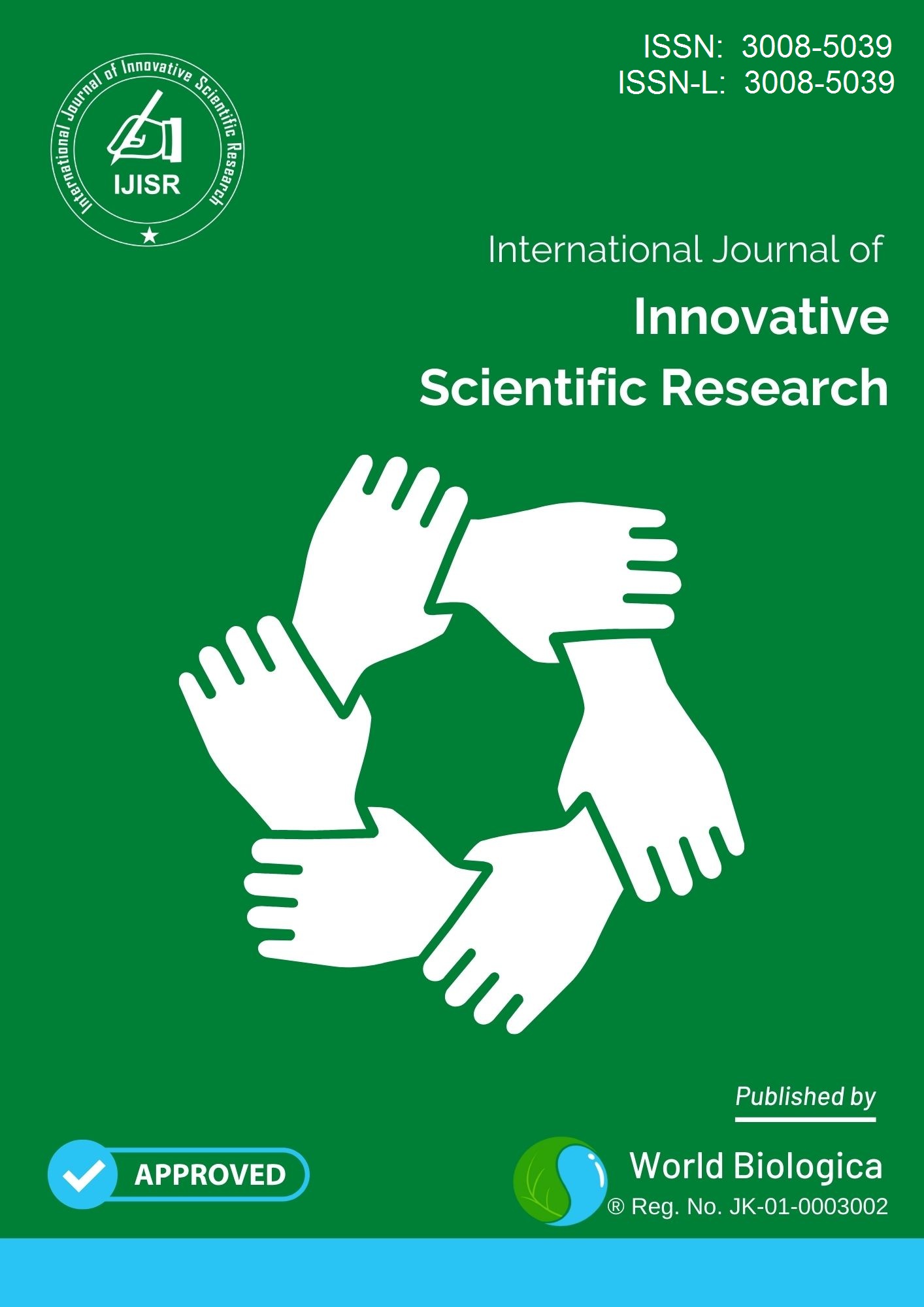Designing of a Macro-Porous Film using Biomaterials to Evaluate their Degradation Nature and Enhance Mechanical Behavior for Various Industrial Purposes: Agriculture and Biomedical Field
Keywords:
Biodegradation, Morphology, Surface roughness, Swelling kinetics, Tensile strengthAbstract
Superabsorbent hydrogels are a kind of gel that is formed by chemically stabilizing a tridimensional network of polymers with hydrophilic properties. Hydrogels are commonly researched and advocated for agricultural purposes during the past 40 years to improve water supply for plants by boosting the water-retaining qualities of growing media (substrates with or without soil). The bulk of commonly accessible commercially available hydrogels are acrylate-based. Hence not biodegradable. Because of the increased focus on environmental problems, biodegradable hydrogels are gaining popularity for possible commercial applications in agriculture, bioactive compound carriers. The usage of biomaterials is becoming more popular as a means of reducing the use of non-renewable resources and reducing environmental pollution produced by synthetic materials. Biopolymers’ biodegradability and non-toxic nature help to maintain our environment clean and safe. This study discusses how to improve the mechanical and physical characteristics of biopolymers, particularly in the realm of bioengineering. The synthesized cryogel characterized by morphological study (FE-SEM), mechanical analysis, degradation behavior and macro-porosity, water holding capacity, water retention nature. The paper begins with a fundamental introduction and progresses to a detailed examination of synthesis and a unique investigation of several recent focused biopolymers with mechanical, physical, and biological characterization. Biopolymers’ unique non-toxicity, biodegradability, biocompatibility, and eco-friendly features are boosting their applications, especially in bioengineering fields, including agriculture, pharmaceuticals, biomedical, ecological, industrial, aqua treatment, and food packaging, among others, at the end of this paper. The purpose of this research work is to provide an overview of the relevance of biopolymers in smart and novel bioengineering applications.
Downloads
References
Liang Xu, Linzi Qiu, Yang Sheng, Yixin Sun, Linhong Deng, Xinqing Li 2018, Mark Bradley and Rong Zhang, Biodegradable pH-responsive hydrogels for controlled dual-drug release J. Mater. Chem. B, 2018, 6, 510--517 (The Royal Society of Chemistry 2018).
Y. Chen, ed., (2019). Hydrogels based on natural polymers. Elsevier.
B. Tomadoni, C. Casalongué, and V.A. Alvarez.(2019). Biopolymer-based hydrogels for agriculture applications: swelling behavior and slow release of agrochemicals. Polymers for Agri-food applications, pp.99-125.
Dock-Bregeon, A.-C.; Lewis, K.A.; Conte, M.R. The la-related proteins: Structures and interactions -of a versatile superfamily of RNA-binding proteins. RNA Biol. 2021, 18, 178–193. [CrossRef]
Olechnovic, K.; Venclovas, C. VoroMQA web server for assessing three-dimensional structures of proteins and protein complexes. Nucleic Acids Res. 2019, 47, W437–W442. [CrossRef]
Pickel, B.; Schaller, A. Dirigent proteins: Molecular characteristics and potential biotechnological applications. Appl. Microbiol. Biotechnol. 2013, 97, 8427–8438. [CrossRef] [PubMed]
Lia Ofek , Daniella Goder, Meital Zilberman ,Formulation-Properties of Novel Ibuprofen-Loaded Soy Protein Wound Dressings Recent Progress in Materials 2019, volume 1, issue 4 doi:10.21926/rpm.1904004.
Sanjeev Gautam,Bhasha Sharma, Purnima Jain Green Natural Protein Isolate based composites and nanocomposites: A review , https://doi.org/10.1016/j.polymertesting.2020.106626.
J. Fromageau, J. L. Gennison, C. Schmitt, L. R. Maurice, R. Mongrain, G. Cloutier, “Estimation of polyvinyl alcohol cryogel mechanical properties with four ultrasound elastography methods and comparison with gold standard testing”, IEEE transactions on Ultrasonics, Ferroelectrics, and Frequency Control.54, 498-509 (2007).
E.L. Madsen, M.A.Hobson, H.Shi, T.Varghese, G.R.Franck, “Tissue-mimicking agar/gelatin materials for use in heterogeneous elastography phantoms”. Phys.Med.Biol.50, 5597-5618 (2005).
Jun Chen, Xiaoyu Ma, Qiuchen Dong, Donghui Song, Derek Hargrove, Sahil R. Vora, Anson W. K. Ma, Xiuling Lub and Yu Lei, Self-healing of thermally-induced, biocompatible and biodegradable protein hydrogel, RSC Adv., 2016, 6, 56183–56192.
Satarker, S.; Nampoothiri, M., Structural proteins in severe acute respiratory syndrome coronavirus-2. Arch. Med. Res. 2020, 51, 482–491.
Hillary Mndlovu, Pradeep Kumar , Lisa C. du Toit & Yahya E. Choonara, npj, A review of biomaterial degradation assessment approaches employed in the biomedical field, 2019 materials degradation.
Huang, H.; Qi, X.; Chen, Y.; Wu, Z. Thermo-sensitive hydrogels for delivering biotherapeutic molecules: A review. Saudi Pharm. J. 2019, 27, 990–999.
Yan, W.; Jia, X.; Zhang, Q.; Chen, H.; Zhu, Q.; Yin, L. Interpenetrating polymer network hydrogels of soy protein isolate and sugar beet pectin as a potential carrier for probiotics. Food Hydrocoll. 2021, 113, 106453.
Downloads
-
Download PDF
 Abstract Views: 182,
Abstract Views: 182,  Download PDF: 53
Download PDF: 53
Published
Issue
Section
License
Copyright (c) 2024 International Journal of Innovative Scientific Research

This work is licensed under a Creative Commons Attribution-ShareAlike 4.0 International License.

















